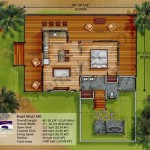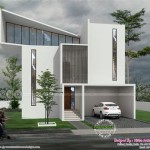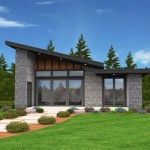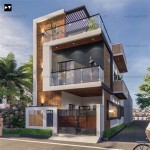Historic House Floor Plans: A Blueprint into the Past and Present
Historic house floor plans are detailed drawings that depict the layout of a building, providing valuable insights into the architectural styles, social norms, and construction techniques of a particular era. These plans serve as blueprints for restoration projects, architectural research, and historical preservation efforts. For instance, the floor plan of Thomas Jefferson’s Monticello reveals a complex and symmetrical design that reflects the Enlightenment ideals of rationality and order.
In this article, we will explore the significance of historic house floor plans, examining how they contribute to our understanding of the past and guide our efforts to preserve our architectural heritage.
Historic house floor plans offer a wealth of information about the buildings they represent, including:
- Architectural styles
- Social norms
- Construction techniques
- Room functions
- Interior design
- Circulation patterns
- Building materials
- Technological advancements
- Cultural influences
These plans provide valuable insights into the lives of the people who lived in these houses and the societies they inhabited.
Architectural styles
Historic house floor plans reveal the architectural styles prevalent during different periods. These styles reflect the cultural, social, and economic influences of the time. For example, Georgian-style houses, popular in the 18th century, are characterized by their symmetrical facades, rectangular floor plans, and central hallways. Victorian-era houses, built in the 19th century, exhibit a more eclectic mix of styles, often incorporating elements of Gothic Revival, Italianate, and Second Empire architecture. By examining floor plans, architects and historians can identify the architectural style of a building and gain insights into its historical context.
Floor plans also provide information about the evolution of architectural styles over time. By comparing the floor plans of houses from different periods, we can observe changes in room layouts, circulation patterns, and overall design. For instance, medieval houses were typically built around a central hall, with rooms arranged around the perimeter. In contrast, Renaissance-era houses featured more open and symmetrical floor plans, with rooms organized around a central courtyard or atrium. These changes reflect the shift from a feudal society to a more urban and sophisticated culture.
Furthermore, floor plans can reveal the influence of regional and cultural factors on architectural styles. For example, the floor plans of houses in the American South often incorporate large porches and verandas, reflecting the region’s warm climate and outdoor lifestyle. In contrast, houses in the New England region tend to have smaller porches and more compact floor plans, reflecting the colder climate and the need for energy efficiency.
By studying historic house floor plans, we gain a deeper understanding of the architectural styles that have shaped our built environment. These plans provide valuable insights into the past and help us to appreciate the diversity and richness of our architectural heritage.
Social norms
Historic house floor plans also shed light on the social norms and values of the past. The layout of rooms, the size and placement of windows, and the presence of certain features can all provide clues about how people lived and interacted within their homes.
- Gender roles
Floor plans can reveal the gendered division of space within the home. In many traditional societies, women’s activities were confined to the private sphere of the home, while men’s activities took place in the public sphere. This division is often reflected in the floor plan, with women’s quarters located in the back of the house and men’s quarters located in the front. For example, in Victorian-era houses, the kitchen and other domestic spaces were typically located in the back of the house, while the parlor and other formal rooms were located in the front.
- Social hierarchy
Floor plans can also reveal the social hierarchy within a household. The size and placement of rooms often reflect the status of the occupants. For example, in medieval castles, the lord and his family occupied the largest and most luxurious rooms, while the servants occupied smaller and less desirable rooms. Similarly, in Georgian-era houses, the master bedroom was typically located on the second floor, while the servants’ quarters were located in the attic or basement.
- Family life
Floor plans can provide insights into family life and child-rearing practices. For example, the presence of nurseries and playrooms indicates that the house was designed to accommodate children. The size and location of the kitchen and dining room can reveal information about the importance of family meals. And the presence of separate sleeping quarters for children and adults suggests that children were expected to be independent at a young age.
- Privacy
Floor plans can also reveal the value placed on privacy within a society. The presence of private bedrooms and bathrooms indicates that individuals were expected to have their own personal space. The size and placement of windows can also provide clues about how people managed their privacy. For example, houses with large windows facing the street suggest that the occupants were comfortable with public exposure, while houses with smaller windows and more private courtyards suggest that the occupants valued their privacy.
By examining historic house floor plans, we can gain a deeper understanding of the social norms and values of the past. These plans provide valuable insights into how people lived and interacted within their homes, and how these social norms have changed over time.
Construction techniques
Historic house floor plans also provide valuable information about the construction techniques used during different periods. The choice of materials, the methods of assembly, and the structural systems employed all reflect the technological advancements and cultural influences of the time.
- Timber framing
Timber framing is a traditional construction technique that uses wooden beams and posts to create a structural framework for a building. This technique was widely used in Europe and North America from the Middle Ages to the 19th century. Timber-framed houses are characterized by their exposed beams and posts, which create a distinctive visual aesthetic. The flexibility of timber framing allows for a wide variety of floor plans and architectural styles.
- Masonry construction
Masonry construction uses stone, brick, or concrete blocks to create load-bearing walls and other structural elements. This technique has been used for centuries and is still widely used today. Masonry buildings are known for their durability and fire resistance. The thickness and arrangement of masonry walls can vary depending on the climate, the availability of materials, and the desired architectural style.
- Balloon framing
Balloon framing is a lightweight construction technique that uses long, continuous studs that extend from the foundation to the roof. This technique was developed in the United States in the 19th century and is still widely used today. Balloon-framed houses are relatively easy and inexpensive to build, and they can be adapted to a variety of floor plans and architectural styles.
- Platform framing
Platform framing is a more modern construction technique that uses shorter studs that are supported by horizontal platforms at each floor level. This technique was developed in the early 20th century and is now the most common method of framing houses in North America. Platform-framed houses are more stable and resistant to earthquakes than balloon-framed houses, but they are also more expensive to build.
By examining historic house floor plans, we can gain a deeper understanding of the construction techniques used during different periods. This information can be useful for architects, builders, and historians who are involved in the restoration and preservation of historic buildings.
Room functions
Historic house floor plans can also provide insights into the functions of different rooms within a house. The size, shape, and location of rooms can all provide clues about how they were used.
- Public rooms
Public rooms are those that are designed to be used by guests and family members alike. These rooms are typically located on the first floor of the house and include the living room, dining room, and parlor. Public rooms are often larger and more elaborately decorated than private rooms.
- Private rooms
Private rooms are those that are designed to be used by individual family members. These rooms are typically located on the second floor of the house and include the bedrooms, bathrooms, and dressing rooms. Private rooms are often smaller and more simply decorated than public rooms.
- Service rooms
Service rooms are those that are used to support the daily operations of the household. These rooms are typically located in the basement or on the first floor of the house and include the kitchen, laundry room, and pantry. Service rooms are often smaller and more utilitarian than public or private rooms.
- Circulation spaces
Circulation spaces are those that are used to move around the house. These spaces include hallways, stairs, and landings. Circulation spaces are typically smaller and less decorated than other types of rooms.
By examining historic house floor plans, we can gain a deeper understanding of how different rooms were used in the past. This information can be useful for architects, interior designers, and historians who are involved in the restoration and preservation of historic buildings.
Interior design
Historic house floor plans can also provide insights into the interior design of a building. The size, shape, and location of rooms, as well as the presence of certain features, can all provide clues about how the interior space was used and decorated.
- Furniture placement
The floor plan of a room can reveal how furniture was arranged. For example, the placement of windows and doors can indicate where beds, tables, and other furniture pieces were typically placed. In addition, the presence of built-in features, such as fireplaces, closets, and bookshelves, can also provide clues about furniture placement.
- Circulation patterns
The floor plan of a house can also reveal the circulation patterns of its occupants. The location of doors, hallways, and stairs can indicate how people moved around the house and how different rooms were connected. This information can be useful for understanding how the house was used and how it functioned on a daily basis.
- Decorative elements
The floor plan of a house can also provide clues about the decorative elements that were used in the interior. For example, the presence of moldings, cornices, and other decorative features can indicate the level of formality and luxury of the interior design. In addition, the location of windows and doors can provide insights into how natural light was used to illuminate the interior space.
- Technological advancements
The floor plan of a house can also reveal the technological advancements that were available at the time it was built. For example, the presence of central heating, indoor plumbing, and electricity can all be seen in the floor plan. This information can be useful for understanding how the house was used and how it changed over time.
By examining historic house floor plans, we can gain a deeper understanding of the interior design of buildings from different periods. This information can be useful for architects, interior designers, and historians who are involved in the restoration and preservation of historic buildings.
Circulation patterns
The floor plan of a house can reveal the circulation patterns of its occupants. The location of doors, hallways, and stairs can indicate how people moved around the house and how different rooms were connected. This information can be useful for understanding how the house was used and how it functioned on a daily basis.
- Entrances and exits
The location of entrances and exits can reveal how people entered and exited the house. For example, a house with a front door and a back door suggests that people typically entered the house through the front door and exited through the back door. The presence of multiple entrances and exits can also indicate that the house was used for a variety of purposes.
- Hallways and corridors
The location and size of hallways and corridors can reveal how people moved around the house. For example, a wide hallway with multiple doors suggests that the hallway was acirculation space. A narrow hallway with few doors suggests that the hallway was a secondary circulation space.
- Stairs
The location and number of stairs can reveal how people moved between different floors of the house. For example, a house with a grand staircase in the center of the house suggests that the staircase was acirculation space. A house with a smaller staircase in the back of the house suggests that the staircase was a secondary circulation space.
- Service areas
The location of service areas, such as the kitchen and laundry room, can reveal how people moved around the house to performtasks. For example, a kitchen that is located near the dining room suggests that food was typically served in the dining room. A laundry room that is located in the basement suggests that laundry was typically done in the basement.
By examining the circulation patterns in a historic house floor plan, we can gain a deeper understanding of how the house was used and how it functioned on a daily basis. This information can be useful for architects, interior designers, and historians who are involved in the restoration and preservation of historic buildings.
Building materials
Historic house floor plans can also provide insights into the building materials that were used during different periods. The choice of materials reflects the availability of resources, the technological advancements, and the cultural preferences of the time.
- Timber
Timber was one of the most common building materials used in historic houses. Timber is a strong and durable material that is relatively easy to work with. It was used to frame the walls, floors, and roofs of houses. Timber houses are often characterized by their exposed beams and posts, which create a distinctive visual aesthetic.
- Stone
Stone is another common building material that was used in historic houses. Stone is a durable and fire-resistant material that can be used to create a variety of architectural styles. Stone houses are often found in areas where stone is readily available. They are characterized by their thick walls and small windows.
- Brick
Brick is a versatile building material that was used in historic houses of all types. Brick is a durable and fire-resistant material that can be used to create a variety of architectural styles. Brick houses are often found in urban areas, where they were used to create row houses and other multi-family dwellings.
- Concrete
Concrete is a relatively modern building material that was used in historic houses in the late 19th and early 20th centuries. Concrete is a strong and durable material that can be used to create a variety of architectural styles. Concrete houses are often found in urban areas, where they were used to create apartment buildings and other commercial buildings.
By examining the building materials used in historic house floor plans, we can gain a deeper understanding of the construction techniques and architectural styles of different periods. This information can be useful for architects, builders, and historians who are involved in the restoration and preservation of historic buildings.
Technological advancements
Historic house floor plans can also reveal the technological advancements that were available at the time a house was built. For example, the presence of central heating, indoor plumbing, and electricity can all be seen in the floor plan.
Central heating
Central heating systems were first developed in the 19th century. Before this time, houses were heated by fireplaces and stoves. Central heating systems use a furnace or boiler to heat water or air, which is then distributed throughout the house through pipes or ducts. The presence of a central heating system in a historic house floor plan indicates that the house was built or remodeled after the 19th century.
Indoor plumbing
Indoor plumbing systems were also first developed in the 19th century. Before this time, people used outdoor privies and wells for water. Indoor plumbing systems use pipes to bring water into the house and to remove waste. The presence of an indoor plumbing system in a historic house floor plan indicates that the house was built or remodeled after the 19th century.
Electricity
Electricity was first introduced to homes in the late 19th century. Before this time, people used candles and oil lamps for lighting. Electricity provides a much more convenient and efficient way to light a home. The presence of electricity in a historic house floor plan indicates that the house was built or remodeled after the late 19th century.
These are just a few of the technological advancements that can be seen in historic house floor plans. By examining these plans, we can gain a deeper understanding of how houses have changed over time and how our ancestors lived.
Cultural influences
Historic house floor plans can also reveal the cultural influences that shaped the design of a house. The layout of rooms, the size and placement of windows, and the presence of certain features can all provide clues about the cultural values and beliefs of the people who built and lived in the house.
- Climate and environment
The climate and environment in which a house is built can have a significant impact on its floor plan. For example, houses in warm climates often have large porches and verandas to provide shade and ventilation. Houses in cold climates often have smaller windows and thicker walls to conserve heat. The presence of certain features, such as fireplaces and chimneys, can also indicate the climate in which a house was built.
- Social customs and traditions
The social customs and traditions of a culture can also influence the design of a house. For example, houses in cultures that emphasize family and community often have large, open living spaces where people can gather. Houses in cultures that emphasize privacy and individualism often have smaller, more compartmentalized floor plans. The presence of certain features, such as separate sleeping quarters for men and women, can also indicate the social customs and traditions of a culture.
- Religious beliefs
The religious beliefs of a culture can also influence the design of a house. For example, houses in cultures that emphasize the importance of light and air often have large windows and open floor plans. Houses in cultures that emphasize the importance of privacy and seclusion often have smaller windows and more enclosed floor plans. The presence of certain features, such as altars or prayer rooms, can also indicate the religious beliefs of a culture.
- Technological advancements
The technological advancements available at the time a house is built can also influence its floor plan. For example, the introduction of central heating and indoor plumbing in the 19th century led to changes in the design of houses. Houses built before this time often had fireplaces and privies, while houses built after this time often had central heating and indoor plumbing. The presence of certain features, such as electrical wiring and telephone jacks, can also indicate the technological advancements available at the time a house was built.
By examining the cultural influences that shaped the design of a historic house, we can gain a deeper understanding of the people who built and lived in the house. This information can be useful for architects, historians, and anyone else who is interested in the history of architecture and culture.










Related Posts








